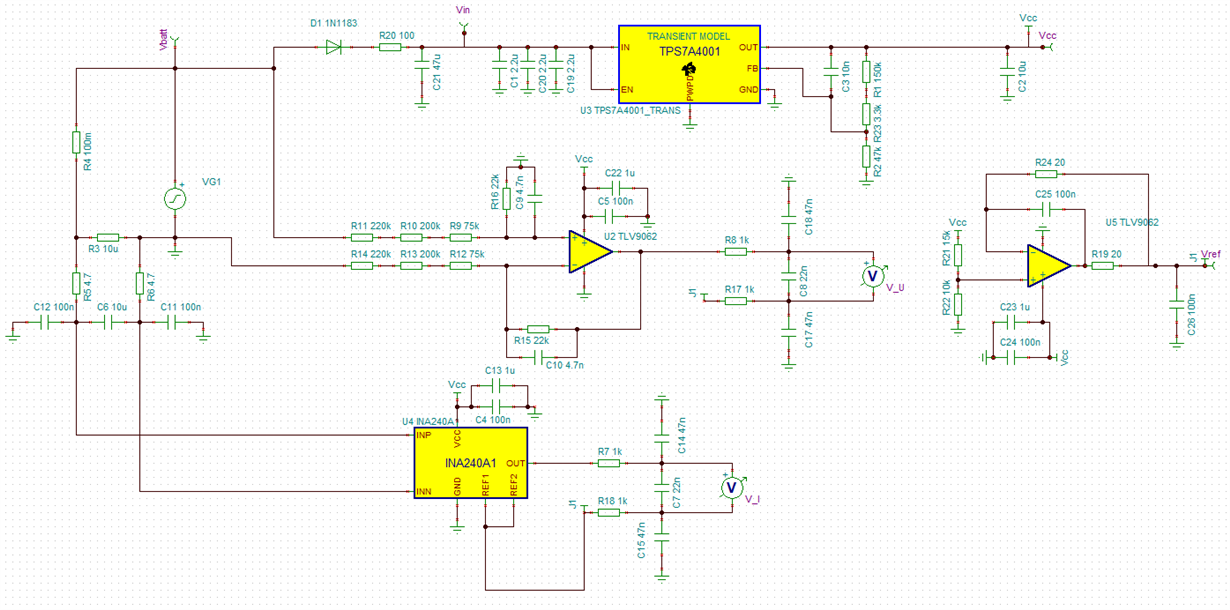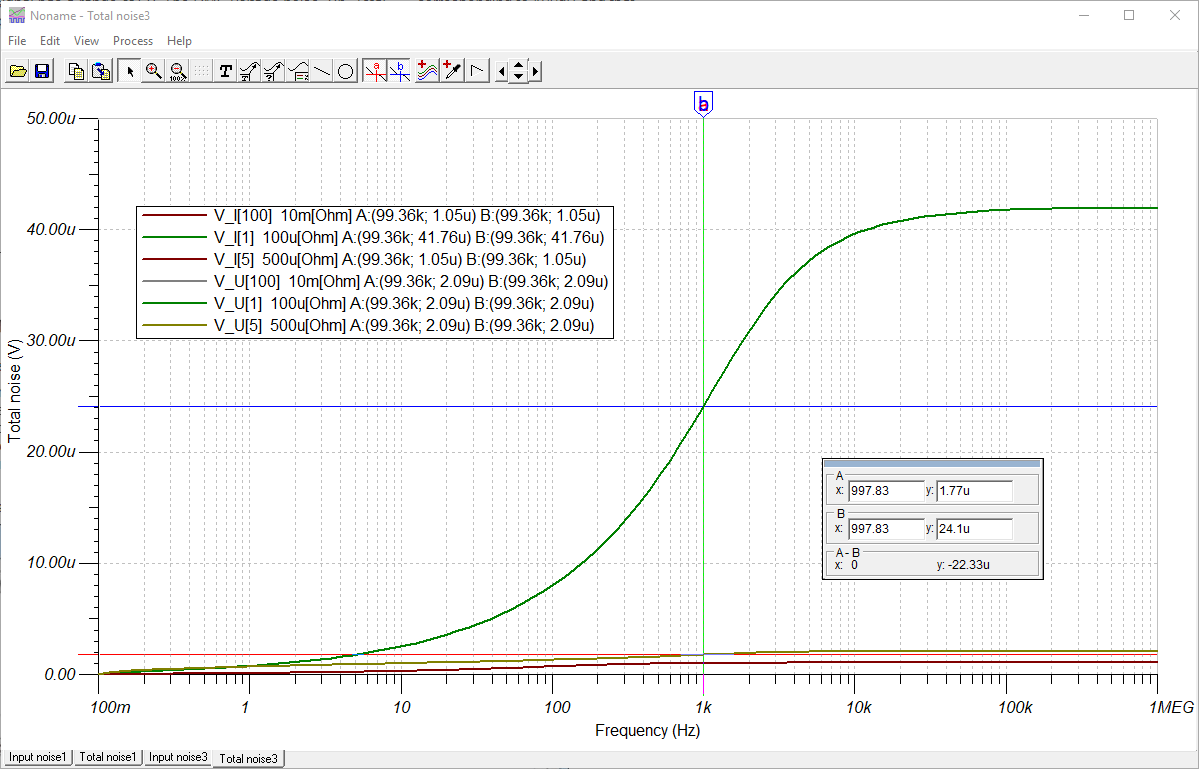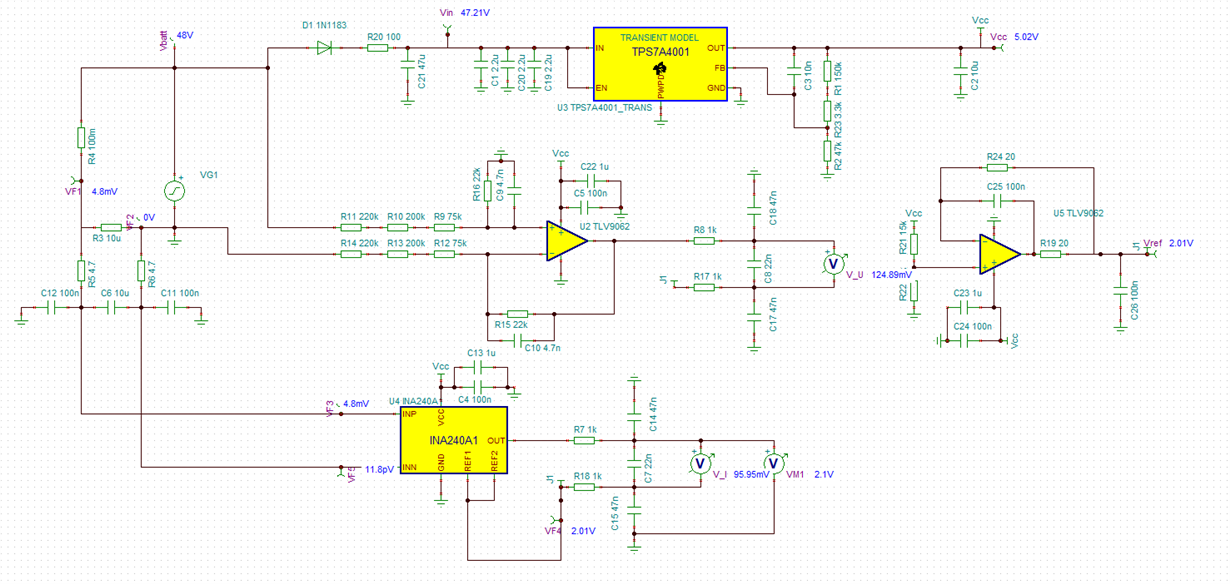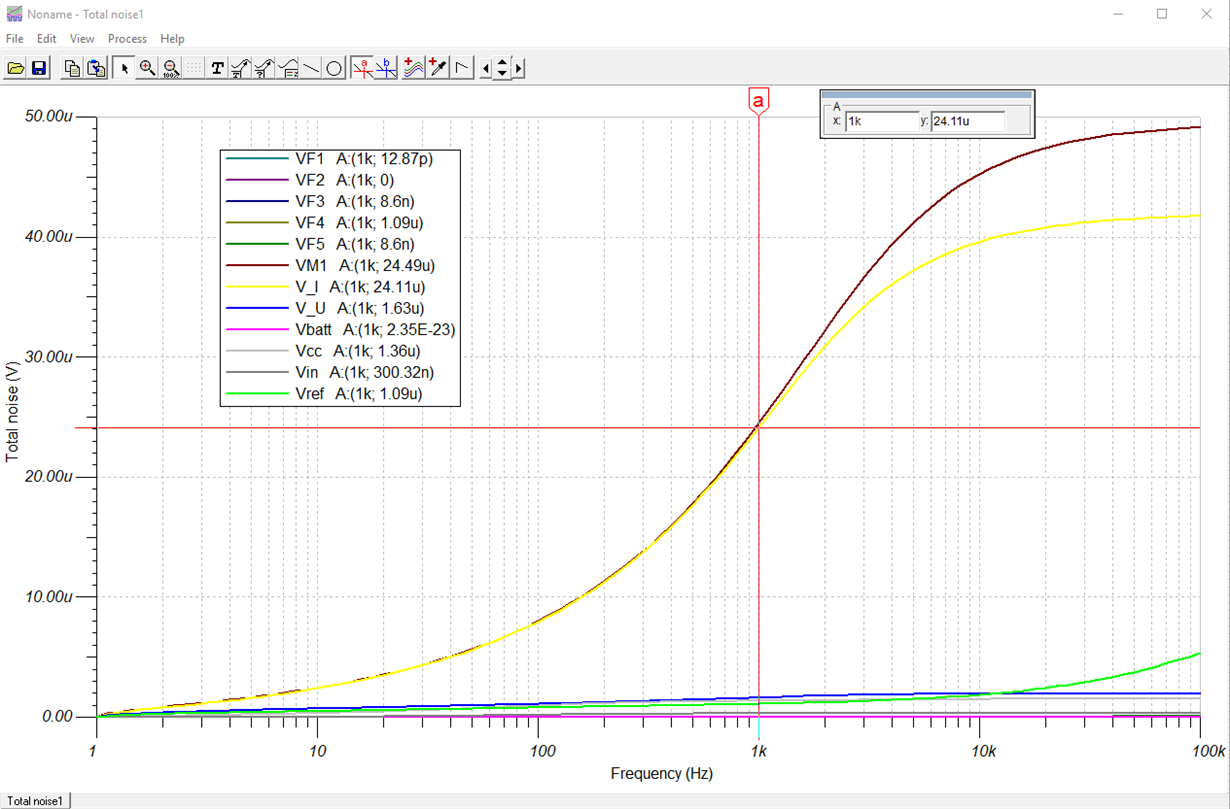Other Parts Discussed in Thread: TINA-TI, ADS131A04,
Tool/software: TINA-TI or Spice Models
We start a schematic to measure high current on low voltage systems, 48V battery powered system to be precise. The current will be measured with a shunt, up to 5000A. The used shunt is 10uOhm located on the negative connection of the battery and it is connected to the INA240A1. On the output will be an A/D converter, the ADS131A04, 24bits Sigma/Delta.
The simulation gives results as expected, except on the noise analysis. It shows us that when the shunt resistance goes low to the real value, 10uOhm the noise rise 10 time higher than wanted for the AD converter. The same simulation with a 500uOhm shunt show a noise 20 times lower than before.
The stage is filtered at entry at 1.5kHz 1 order and at output also a filter stage of 1.5kHz 1 order.
The simulated noise level are :
1.77uV @1kHz with 500u shunt
24.1uV @1kHz with 100u or 10u shunt.
To use the ADC correctly the noise level should not be higher than 2.8uV.
Are the results correct or did I made errors on the use of TINA simulator ?
What causes this moise rise and how can I avoid it ?
I have all files if needed...
Best regards, Philippe





